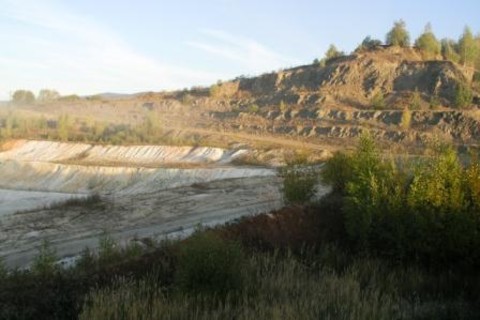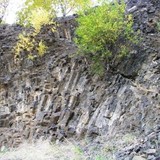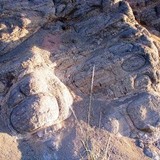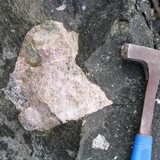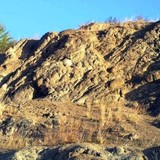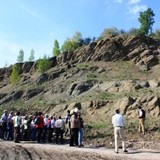Hroznětín - Krásný Vrch Hill
Minerals beneath a basalt cover
The prominent basalt body of Krásný Vrch Hill (510 m ASL) south of Hroznětín emerges from the slightly undulating surrounding landscape with elevations of around 460–480 m. It was formed by a Tertiary effusion of leucite basanite. When fresh, it is a dark grey compact to fine-grained igneous rock with fine-grained porphyric texture. There are visible signs of columnar joints in the rock in the eastern quarry face, yet even more interesting is the spheroidal disintegration on display in the southern face.
Krásný Vrch Hill lies in the north-eastern wing of the Tertiary Sokolov Basin. Here, the kaolinized granites of the Karlovy Vary Massif in the basin´s basement are overlayed by the Tertiary deposits of several stratigraphic units. The Staré Sedlo Formation is composed of variously thick and often discontinuous layers or lenses of sandstone, quartzite, sand and secondary kaolin. The younger Nové Sedlo Formation is composed of brown coal, clay and sand, locally enriched in uranium (Josef Beds) and then, above, of a volcanogenic series with occurring bentonite (strongly weathered tuff, tuffite and explosion breccia). The entire complex is covered by the youngest basaltic effusion, from which four minerals were mined in the relatively recent history: basalt for crushed aggregate, foundry grade bentonite, uranium ore from the sediments of the Josef Beds, and paper and ceramic grade kaolin.
The eastern part of the locality is currently reclaimed. The western part, where the kaolin reserves were exhausted, is designated for the disposal of overburden from the Ruprechtov kaolin mine.
The area is, for now, not open to the public due to continuing mining activities.


